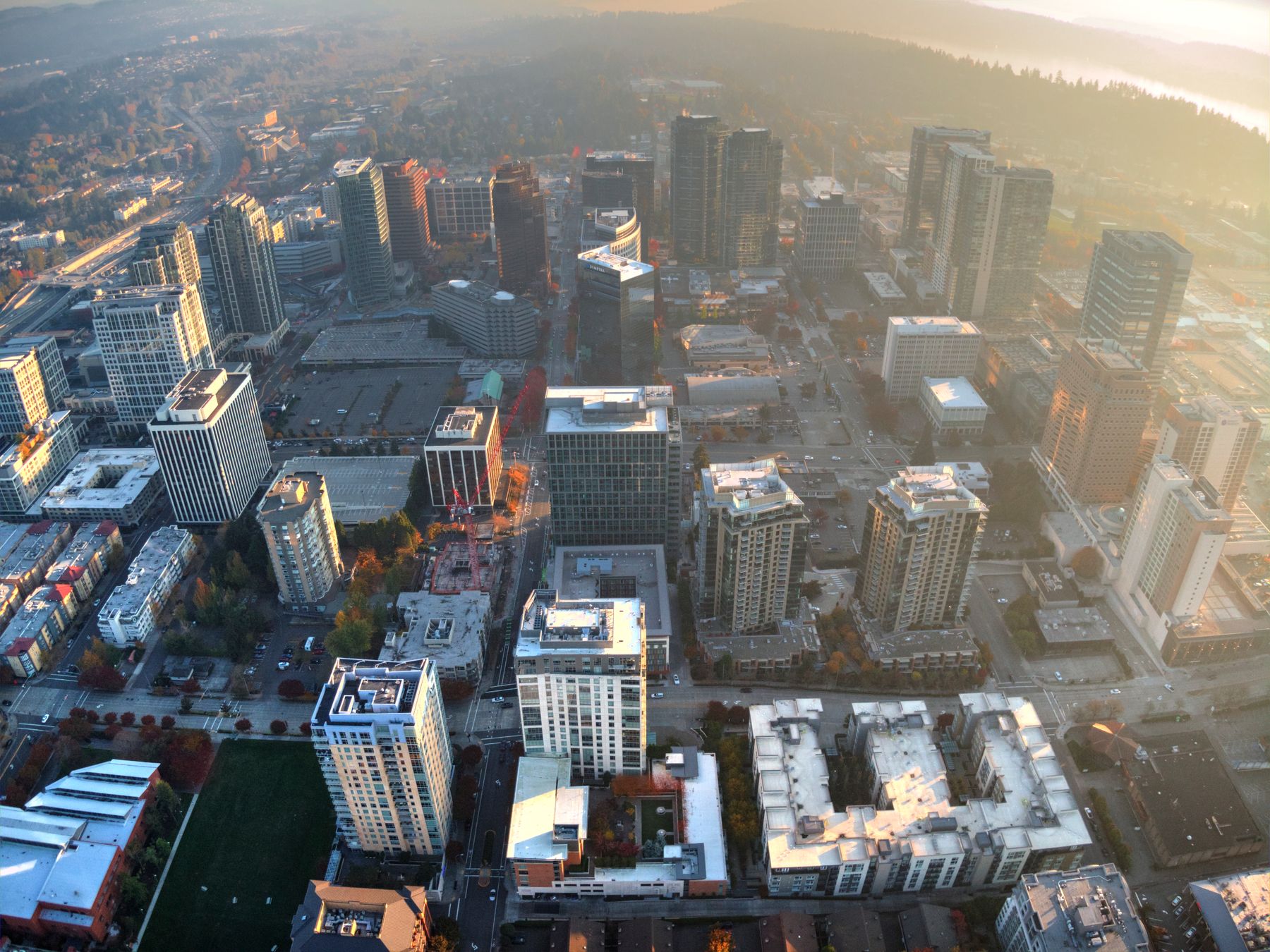70 Years Young: Bellevue Marks Seven Decades as an Incorporated City
March 31, 2023 - by Katie Gosa
70 Years Young:
Bellevue Marks Seven Decades as an Incorporated City

sign in 1953, marked by Gene Boyd &
Phil Reilly.
Photo: Eastside Heritage Center
Today marks the 70th anniversary of the incorporation of our “city within a park.” In the latest edition of Its Your City, Bellevue's city staff shared a delightful story about our city’s history
. Here at the BDA, we're joining them on the trip down memory lane. Let’s take a look at Bellevue’s phases of growth throughout the years and the changing of downtown's landscape.
Communities have existed in Bellevue much longer than 1953. The Coast Salish tribes has called this land their home for thousands of years. From 1863- 1953, Japanese American farmers were a major force responsible for Bellevue’s reputation as an agricultural hub. The prominent Sakutaro Takami and his family planted some of Bellevue’s first strawberry fields at the beginning of the 1900s.

where PACCAR building stands n NE 8th.
Photo: Eastside Heritage Center
Today, as you walk around Bellevue Way, 108th St., or near the Wilburton Trestle, take a moment and imagine these spaces just 90 years ago. Picture farming lands plotted with rows of plentiful crops and a growing community of dedicated farmers and their families. As World War II (WWII) arrived, the farming community landscape started changing. Japanese land ownership was outright banned in some cases, and severely limited in others. Then came the mass incarceration of Japanese-American people following Pearl Harbor. All 60 of Bellevue’s Japanese-American families were forced into internment camps. Not many returned- those who did found much different conditions.

The loss of these Japanese American farmers impacted Bellevue's agriculture-based economy. The market shifted to paving new developments of housing, retail, and a variety of businesses. Bellevue Square opened in 1946, marking the start of Downtown Bellevue’s reputation as a retail destination. With the official city incorporation in 1953, Bellevue officially hit its suburban phase.
The 1950s and 60s - after WWII - brought the baby boom and the rapid population growth. Companies took note of Bellevue’s central regional position, and our skyline saw its first towers, including the PACCAR and Puget Sound Energy buildings. By 1965, a number of skyscrapers were visible from the waterfront and by 1969, the tallest tower was 13-stories high. The beginnings of modern Downtown Bellevue took shape as we moved from a suburban town to a leading edge city, especially with the annexation of Lake Hills.


The 1974 Comprehensive Plan provided the road map from suburbia to the Bellevue we know today, leading to an extensive Land Use Code adoption in 1978. This plan created the tiered ‘wedding cake’ density model our city still follows to this day. Phase I of the Downtown Park opened after some initial challenges to acquire sufficient funding in 1987 on a former Bellevue School District site. In 1985, the Bellevue Transit Center opened in downtown, connecting Bellevue’s public transit with the region - It became so popular that it later expanded in 1995.
The 1990s saw the high tech industry boom in Bellevue, especially in the downtown area. Incredibly rapid growth continued through the early 2000s. Microsoft, Expedia.com, Valve and Bungie are just a few of the notable companies responsible for Downtown Bellevue’s culture of leading innovation in technology. The mid-2000s saw Downtown become the fasted growing residential neighborhood, though downtown real estate remained primarily commercial office spaces. In 2009, the Bravern opened. Strong, diversified investment continued as a hallmark through the next decade. In 2019, Amazon established a major presence in downtown's future office mix.

Our walk down memory lane ends roughly around March 2020. The profound, widespread impacts of the COVID-19 pandemic brought Downtown Bellevue’s bustling activity to a halt. Other rippling impacts continue to unfold to this day. Although significant investment and construction remains in downtown, foot traffic disappeared with activity returning slowly over time after vaccines became available. According to Placer.ai, about 70% of foot traffic has returned in February 2023 compared to February 2020. Despite the difficulties of the last three years, Downtown Bellevue’s future continues to be bright. Here are the few things to look forward to: Amazon has a return-to-office plan starting May 1 and over 350+ stories of development projects are currently under construction in Downtown Bellevue as of December 2022. The rapid changes to Bellevue’s downtown skyline marking the last 70 years show no signs of stopping.
Sources for this article include Eastside Heritage Center, the City of Bellevue, and History Link's 1863-2003 Bellevue Timeline (Special Gift Edition) by Alan J. Stein & The HistoryLink Staff.





